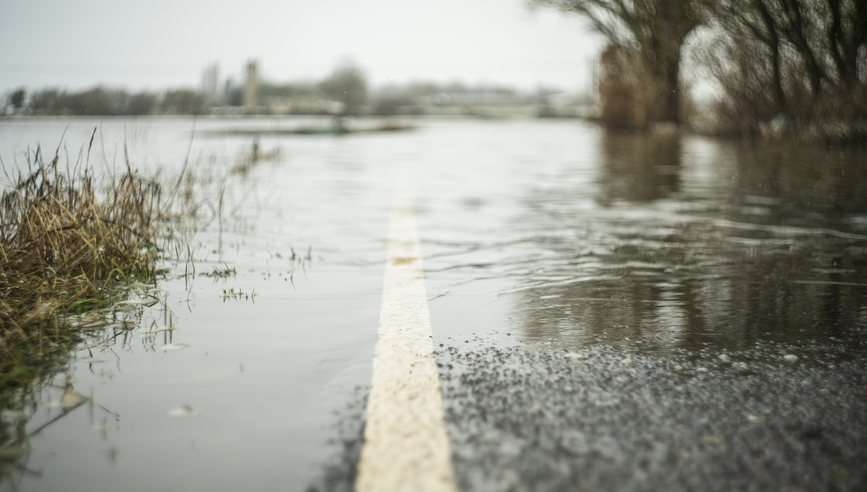From Water Claims to Climate Change: Why Property Owners Insurance Claims Costs are Rising


Over the past 20 years, claims costs for Property Owners Insurance have risen significantly, while rates have remained stable or even fallen. At Travelers Europe, we insure a wide range of commercial and residential property owners across the UK and Ireland. Property Owners Insurance tends to include four main types of cover: property damage, business interruption (loss of rent/alternative accommodation costs), property owners liability and employers’ liability. We are seeing an increase in both the frequency of losses and the cost of claims across these various types of cover – particularly for property damage and business interruption.
Reasons for this include more frequent severe weather events, changes in construction methods, challenges around ‘escape of water’ claims, and spiralling rebuilding costs. While claims costs have increased significantly over the past two decades, insurance rates and deductibles have not. Added to that, some insureds are not maintaining up-to-date building sums insured, exposing their businesses to additional risks due to under-insurance. All of this means that costs have been going up for insurers, while rates have stayed the same or even fallen in some cases. That is starting to change, with rates beginning to rise to reflect the changing and growing risks that property owners face today.
Why claims costs are rising
- Increasingly extreme weather – Climate change is leading to more frequent severe weather events across the UK and Ireland, such as storms and flooding
- Changing methods of construction – Modern buildings are often less able to withstand fires, floods and storms because of changing construction methods and building materials.
- Soaring escape of water claims – Escape of water claims – such as those from plumbing leaks and frozen pipes – have become a major problem in recent years.
- Challenges around fighting fires – Modern construction methods and open-plan buildings are making it harder to contain fires once they start.
- Spiralling rebuilding costs – The cost of rebuilding a property after it has been damaged has risen dramatically because of escalating materials and labour costs.
- Rising costs for settling personal injury claims – The cost of settling personal injury claims has risen because of diminishing investment returns for claimants.
Increasingly extreme weather
Climate change is causing global temperatures to rise, which in turn is leading to more extreme weather events such as storms, high winds and flooding. The Met Office shows in its 2018 climate report that the 10 hottest years in the UK since 1884 have all been in the past 17 years. This means that properties are being subjected to more severe weather, more frequently, which is leading to more damage and increased property claims. Even buildings that are not situated on a flood plain, for example, may be susceptible to serious flooding and suffer consequences including property damage and loss of rent.
In two examples from the Association of British Insurers (ABI), the 2018 ‘Beast from the East’ led to insurers paying out £194m for burst pipes, while the summer heatwave the same year caused £64m of subsidence claims.
Properties are being subjected to more severe weather, more frequently, which is leading to more damage and increased property claims.
Changing methods of construction
Modern buildings may be easier and cheaper to put up, but they are often less resistant to fires, floods and storms than their traditional counterparts. Buildings have traditionally been made of brick, stone or concrete, but this has changed dramatically in recent decades. There is a trend towards more lightweight construction, with many buildings being timber-framed or metal-framed and incorporating materials such as composite panels and plasterboard. The drive to improve the energy efficiency of buildings has also led to the introduction of new building materials, both internally and as exterior cladding. These materials can be susceptible to water damage and – as some of them are combustible – they can also aid the spread of fire. The structure of modern buildings plays an important role. Modern buildings are frequently larger and have less internal divisions. Previously, commercial and industrial buildings tended to be divided up, which helped to contain damage within smaller areas. Added to that, the residential sector is seeing an increase in large, high-rise blocks being built as land becomes scarcer in urban areas and it becomes more cost effective to build up. Unfortunately, the ‘stacking’ of residential units means that it is not unusual for three or four floors to be affected by a single incident, such as a water leak.
Water, water everywhere
A major change in modern buildings is that we have more water and plumbing in them than ever before. People are adding more bathrooms to their houses; central heating, washing machines and dishwashers are the norm; and even appliances such as fridges and coffee machines can be plumbed in. So why does this matter? Essentially, there are more possible points of failure within a plumbing system than there were previously. That is compounded by the fact that plumbing is often concealed in modern properties, which can lead to problems going undetected for months. Finally, plumbing itself has changed in recent years, with a drive towards using plastic, ‘push fit’ style plumbing, rather than traditional copper piping. Push fit plumbing might be convenient and cheap, but it is also far more prone to failure.
These materials can be susceptible to water damage and – as some of them are combustible – they can also aid the spread of fire.
Soaring escape of water claims
Escape of water claims have become a major problem in recent years and the ABI has described them as “consistently the most expensive claim for domestic property insurers”. Escape of water incidents are water leaks within buildings. Rather than flooding caused by external sources such as weather, escape of water incidents usually relate to plumbing and can occur for a multitude of reasons, from a leaking shower tray to a washing machine not being plumbed in properly. Figures from the ABI in 2017 showed that the average cost of these claims had risen by 31% in the previous three years. In 2016, the total cost of residential escape of water claims was £654 million. Escape of water incidents are a particular issue in residential properties, such as blocks of flats. This is mainly because of the increasing amount of plumbing found in residential buildings, but also because an incident may go undetected for weeks or even months and cause damage to a large number of properties during that time.
Washing machine fault leads to significant water damage
One of our clients owns a block of 28 purpose-built flats. When a resident reported a leak into their flat from the floor above, a plumber checked it and thought it was due to a faulty seal around the bath, so he replaced it. Unfortunately, the leak continued and was eventually traced to a faulty hot water supply to a washing machine. By this time, the leak had done considerable damage to several flats, including damaging some underfloor heating. The claim cost £66,700 in total and caused significant inconvenience for the tenants – especially for the tenants from one of the flats as they had to move out while the repairs took place.
Escape of water incidents usually relate to plumbing and can occur for a multitude of reasons, from a leaking shower tray to a washing machine not being plumbed in properly.
Challenges around fighting fires
Another important aspect of rising property claims costs is fire. The ABI says that fire is one of the most expensive property risks, with insurers paying £1.3 billion in fire claims in 2018. Part of the issue is modern methods of construction. More lightweight, modern materials are more susceptible to damage from fire. In addition, the increasing trend towards very large, open-plan offices and industrial buildings means that once a fire starts, it is very difficult to contain – and it can spread more quickly. A change in approach by the Fire Brigade is also having an impact on fire claims. In general, once they know that a building has been safely evacuated, they will not put their own lives at risk to fight the fire and minimise damage to the property. This is understandable, but it is inevitably having an impact on the size of fire claims we are seeing.
Fire causes major disruption to block of flats
Our insured owns a block of flats where a fire started on the top floor and quickly spread to the roof. It was eventually put out, but all of the flats suffered damage, with the upper floors being directly impacted by fire damage and the lower floors experiencing water damage. When we stripped the building back to start the repairs, we identified some construction defects. These defects had allowed the fire to spread further and more rapidly than it would have done if the building had complied with the relevant building codes. This meant that the damage was far more extensive than initially expected and took longer to rectify. We paid for the residents from 24 of the flats to be re-homed while we carried out the repairs, causing considerable disruption for them and significantly increasing the cost of the claim.
Spiralling rebuilding costs
The cost of rebuilding a property after it has been damaged has soared because of spiralling materials and labour costs. The General Building Cost Index by the Royal Institution of Chartered Surveyors shows that rebuilding costs in the UK have risen 13.5% over the past five years, and 27.5% over the past 10 years. Part of this is down to soaring demand for building materials from rapidly expanding nations such as China and India, which has impacted their cost and availability worldwide. Rising wages are also responsible for the rise in rebuilding costs. Data from the Office of National Statistics shows that average weekly construction wages in the UK rose 15.4% in the five years from 2014 (£551) to 2018 (£636). If Brexit goes ahead, we may also see a labour shortage in the UK construction industry, which would add to rebuilding costs and challenges.
Under-insurance an issue
In addition to rising rebuilding costs, we are seeing evidence that building sums insured and wage estimates are not always keeping up with inflation, which can lead to significant under-insurance. In one case, an independent professional valuation identified that an insured’s listed building was currently insured for 60% – or millions of pounds – less than the correct rebuilding costs.
Rebuilding costs in the UK have risen 13.5% over the past five years, and 27.5% over the past 10 years.
Rising costs for settling personal injury claims
The cost of settling personal injury claims has risen in recent years because of diminishing investment returns for claimants. When a claimant receives a lump sum as compensation for a personal injury claim, it is intended to cover their future financial losses, such as lost earnings and treatment costs. They are then expected to invest this money to ensure their costs will be covered. The amount of compensation that an insurer has to pay is decided in part by the current ‘discount rate’. This rate is the return that the claimant can expect to receive on their investment. The UK discount rate stood at 2.5% for many years, which meant that settlements were reduced to reflect these likely returns. However, the discount rate now stands at -0.25% in England and Wales and -0.75% in Scotland to reflect diminishing investment returns, so insurers are paying out higher levels of compensation.
When a claimant receives a lump sum as compensation for a personal injury claim, it is intended to cover their future financial losses, such as lost earnings and treatment costs.
How can insureds reduce their risks?
Property owners – and their tenants – can take a range of steps to minimise their risks and their associated insurance costs.
- Make sure contractors take appropriate precautions when working on your premises. This is especially important for ‘hot work’ such as welding, which can pose a serious fire risk. If your tenants employ contractors, they should also make sure correct procedures are followed.
- Carry out regular preventative maintenance to protect your property and reduce the likelihood of damage in severe weather, as well as injuries to third parties.
- Keep guttering and valley roofing drainage clear of debris.
- Sign up for flood alerts if your property is in an area prone to flooding, so that you can take preventative action when necessary.
- Ask a plumber to check all of your pipes regularly, as well as checking baths, showers, sinks and so on for leaks.
- Have a leak detection device installed. These devices monitor your water usage and warn you in the event of unusual usage and/or switch off the water if they suspect you have a leak.
- When your premises are unoccupied, take precautions such as switching off your mains services and checking the property regularly for damage because early indentification will minimise a loss.
Encourage your tenants to:
- Put the heating on for some time each day in cold weather to avoid pipes freezing.
- Make sure they know where the main stopcock is and how to turn it off, so that they can do it quickly if there is a leak.
- Keep any external storage of combustible goods and waste to an absolute minimum – and ideally store it at least 10 metres away from any buildings.
Hot work error turns small repair job into multi-million pound claim
When a contractor started a minor repair to the roof of our insured’s building, he tried to dry out a joist using a blowtorch. The joist caught fire and the fire spread quickly around the building, causing enormous damage that took months – and millions of pounds – to repair. The contractor’s public liability insurance would have been inadequate to cover the loss, but his insurer refused to pay anyway because he had not complied with the policy conditions. That left Travelers to pay the entire bill as the buildings insurer.
Make sure contractors take appropriate precautions when working on your premises. This is especially important for ‘hot work’ such as welding, which can pose a serious fire risk.
Travelers Risk Control representatives are available to talk through potential solutions, where you have identified the need for change. You can get in touch with Travelers Risk Control via your usual Travelers contact.


